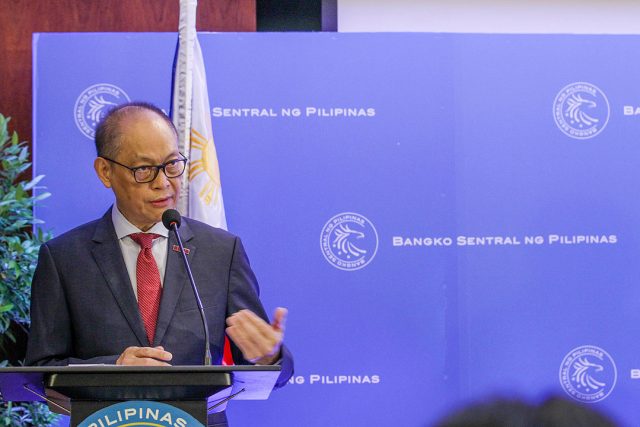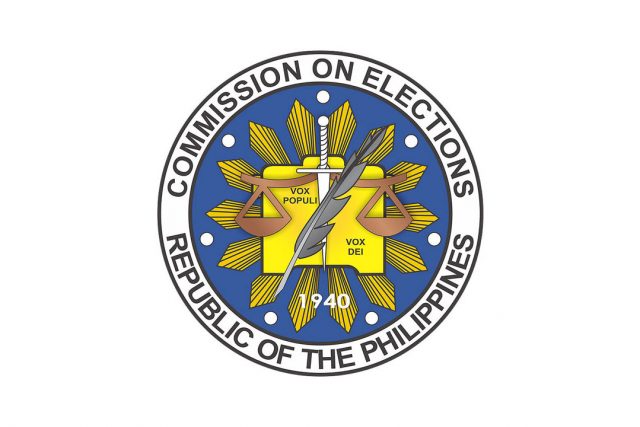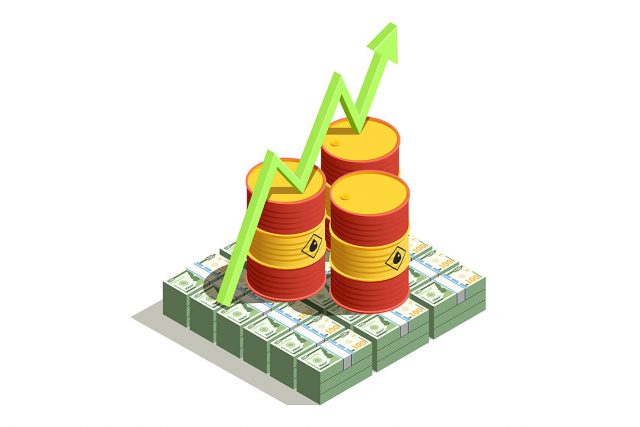If there’s anything that best describes former IMF Managing Director Christine Lagarde’s preferred approach to economic challenges, it is invariably her dogged insistence that strategy should always be consistent with institutional mandate. We believe this is where former Deutsche Bundesbank President Dr. Jens Weidmann was coming from when he quoted Dennis Gabor, the British physicist who invented holography and won the Nobel Prize in 1971, who argued that the future cannot be predicted, but it can be created. This also applies to monetary policy and central banks. If they remain true with their statutory responsibilities, they can help create macroeconomic stability.
But alas, central banks are not gods that they can always deliver on their primary mandates of price and financial stability through business and financial cycles.
And today, central banks lock horns with higher prices and fragile economic recovery. It’s not an easy task to tame soaring oil prices today because they are beyond monetary policy; they respond more to oil and geo politics. What irks interest rate pushers is how sensitive oil prices could be to market movements that are in turn driven by, for instance, the current Russia-Ukraine standoff. There is limited direct fallout from fundamental oil dynamics, but there is an abundance of market jitters.
Speculative movements in oil prices could be serious even as the US and some friendly Middle East countries might jack up oil production. Although still tentative, the global business recovery appears to be gaining more traction than oil supply, challenging central banks around the world and roiling risk assets.
In the Philippines, the Banko Sentral ng Pilipinas’ (BSP) bold declaration in January that inflation would keep within target of 2-4% in 2022 and 2023 is now close to transgressing its basis. Against the assumption of $95 per barrel, Brent crude hit a seven-year high of $94 per barrel in intra-day trading last Monday. In fact, our own Department of Energy is more than bothered, such that it has decided to establish some contingency relief should oil prices hit $100 per barrel this year. If anything at around this level is sustained, we might be seeing sharper adjustments in oil pump prices than we have seen so far. If we add up the potential second-round effects on transport fares, food prices, and wage increases, it is likely that the current forecasts will need some recasting. This is one wild card for inflation busters.
It’s good that the BSP is now talking of radical uncertainty, though not in these terms. “It’s hard to predict how oil prices would look like this spring or summer. As policy makers, we monitor, assess risks and act accordingly. We continue to gather data and assess various scenarios,” BSP Governor Ben Diokno was quoted by this broadsheet the other day. When it comes to various scenarios, he must be referring to different combinations of assumptions and risks with assigned probabilities.
Parallel thinking is therefore critical.
Some market analysts have highlighted the stagflation narrative in the last half of 2021 with the emergence of Omicron. It is still uncertain but prospects are looking up as inventory rebuilds and supply disruption unwinds. This should be positive for growth and inflation in the short run. This much was claimed late last year by former US Treasury Secretary Larry Summers when he stressed the need for the US to reduce trade barriers and lift restrictions on energy production in order to stimulate supply and stabilize prices. Inflation is more than transitory, and has been firmly entrenched in the US, more than ever in the last four decades.
Sadly, the Philippines is also in the same boat as many developed and emerging markets today. The pandemic and economic lockdown squeezed supplies and inventories, contributing to the loss of jobs and income, and worsening inequality and poverty. Only time will tell, but the extraordinary infusion of domestic liquidity and negative real policy rate could have some repressed consequences on inflation and financial stability at some point in the future. We have a situation where price movements appear very moderate but this is due more to weak domestic demand courtesy of income loss and poverty.
Clearly, under these circumstances, it is an enlightened fiscal and business policy that must carry the day. The fiscal deficit this year and the next are expected to taper off to about 7.7% and 6.1%, respectively, with fiscal consolidation. Thus, there is still some space for supporting economic growth. With an easing trajectory, the pandemic demand for public resources is likely to go easy on borrowings. We need to bear in mind that it is but a matter of time before “the music of ample global liquidity stops playing,” as the American Enterprise Institute put it last December in obvious reference to the unavoidable raising of interest rates in the US and elsewhere very soon.
Thus, monetary policy should have an easier lay of the land if it will just abide by its institutional mandate. While the BSP failed to hit the target of 2-4 % in 2021 with 4.5% average inflation, its forecasts for this year and the next are just a little above the midpoint of the target range. With real GDP growth of 7.7% in the last quarter of 2021 and a whole year output growth of 5.6%, BSP assistance may be superfluous.
It can choose to be forward looking and gradually align its policy rate with the fundamentals. We have a negative real policy rate while the US Fed is considering at least four adjustments this year that could siphon off foreign exchange from the emerging markets, including the Philippines, that are still busy supporting their domestic economic activities with low interest rates. We don’t want to see capital reversal happening with dire consequences on the peso, FX reserves, and the asset markets. Domestic liquidity remains excessive and it would not hurt the financial markets and the real sector if some withdrawal of liquidity is initiated and interest rates are rationalized to avoid costly catching up in the future. It’s the increased uncertainty of an inflation spiral and capital reversal that monetary policy should have its eyes on.
In addition, the BSP can already launch what it announced recently — that it would be focusing more on its analysis of the inflation dynamics and the appropriate monetary steps in order to manage the inflation drivers and achieve its inflation goals. More forward guidance may be forthcoming from the BSP to help shape a more stable market sentiment about future inflation. This could be a potent tool to possibly manage market expectations and guide it to receive and digest more information on how the economy is shaping up. Central bank communication and transmission of strategic information to the market may be as important as the announcement of both the inflation numbers and the policy stance itself. There is growing literature that attempts to disentangle the information inherent in monetary policy announcement into a monetary policy shock, forward guidance regarding future interest rates and the so-called information effect about the state of the macroeconomy.
Following Lagarde, it is always useful to have a monetary policy that is strongly consistent with its institutional mandate, always upholding the institution’s statutory independence. The BSP can be patient with monetary policy, but with abundant economic scarring of the pandemic and economic recession, nothing beats agility in monetary response. We do not have to spell out that monetary policy works with a long and variable lag.
Diwa C. Guinigundo is the former deputy governor for the Monetary and Economics Sector, the Bangko Sentral ng Pilipinas (BSP). He served the BSP for 41 years. In 2001-2003, he was alternate executive director at the International Monetary Fund in Washington, DC. He is the senior pastor of the Fullness of Christ International Ministries in Mandaluyong.











